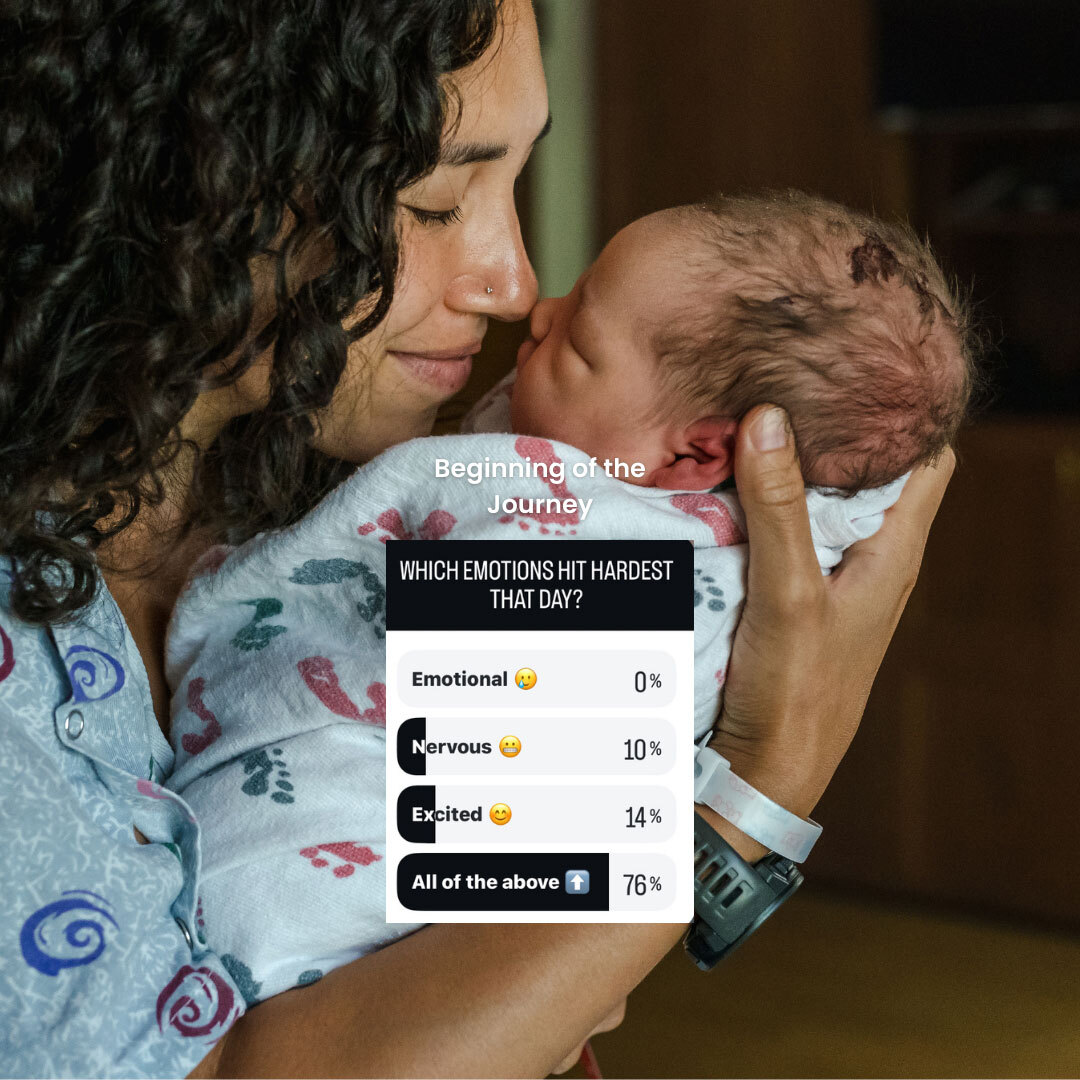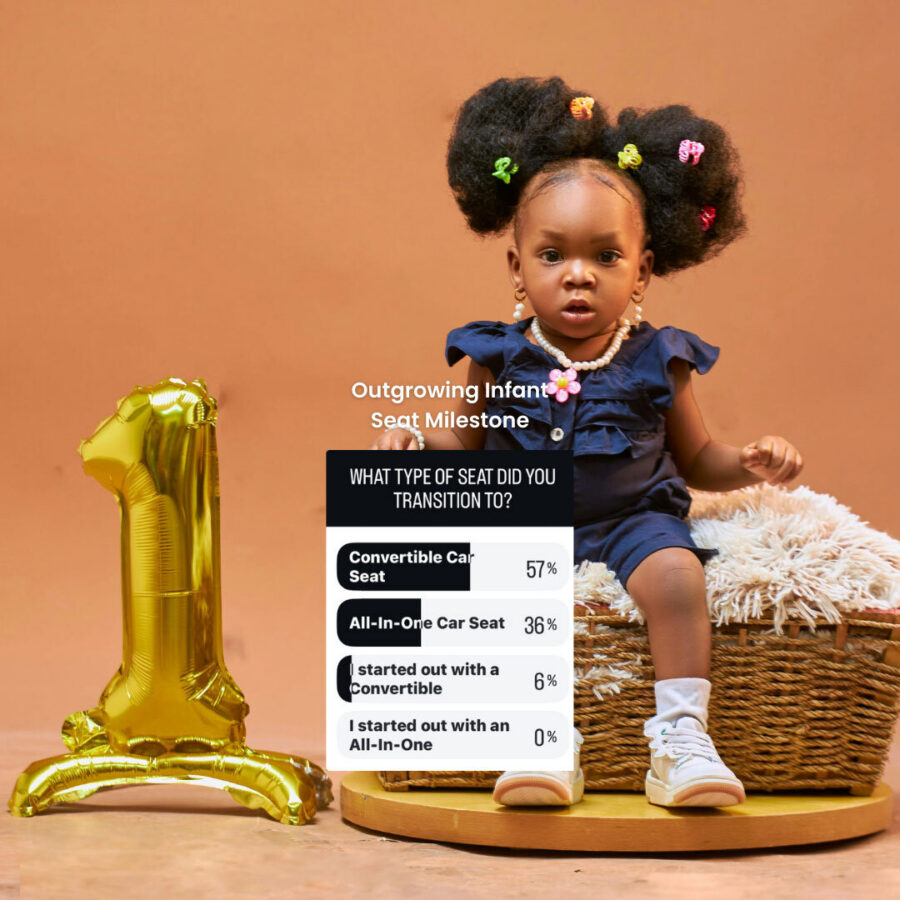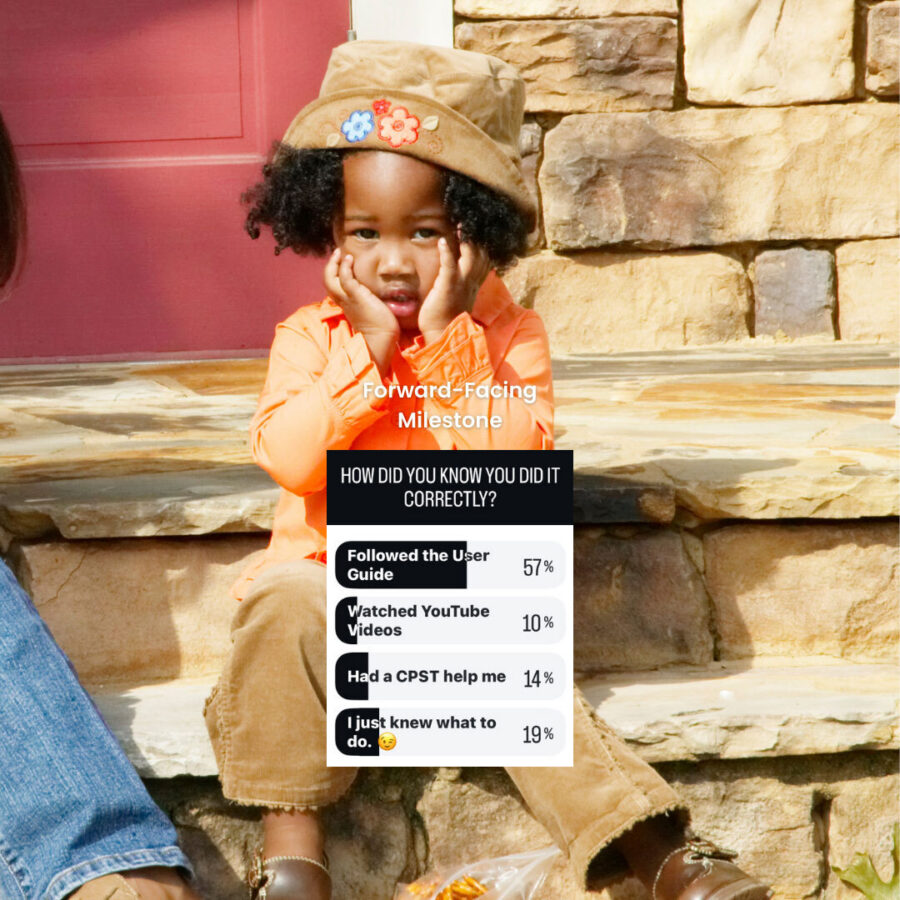Not seeing items you’ve added? Sign in
Family Life
“Mom-ents” that Matter: Celebrating Motherhood Through the Early Car Seat Milestones

It all started with a moment of realization — you're going to be a mom. Then, there was the moment of celebration when you told your friends and family. The moment of elation when you first heard their heartbeat. The moment of profound wonder when you held them for the very first time. Motherhood may be a lifelong journey, but it’s made up of individual moments like these — moments that continuously change your definition of what it means to be a mom.
Not every moment is going to be joyful, however. There are moments when you doubt yourself as a mother. There are moments when you don’t know if you can get through the day. The good news is that no matter what stage of motherhood you’re in, there's a whole community of moms out there who can relate. They’ve been through many of the same moments, navigating similar highs and lows and emerging stronger and more resilient with plenty of wisdom to share. The moments of motherhood might be difficult at times, but that doesn’t mean you have to face them alone.
At Britax, we’re dedicated to fostering a community of caregivers who can help support each other throughout all the "mom-ents" that matter — especially the baby gear transitions. To help bring this community closer together, we’ve collected some thoughts, memories, and advice about each stage of the car seat journey — all from moms throughout the U.S. and Canada. Whether you’re expecting your first child or making the final transition from belt-positioning booster to the vehicle seat, we hope you’ll feel encouraged by the thoughts and experiences of other Britax moms.
The First Ride Home: New Beginnings
That first ride can feel overwhelming. You’re filled with nerves, joy, and a dozen what-ifs. Countless moms have shared that moment with you — and their reflections may offer some reassurance.
What went through your mind on the first ride with your newborn?
"They're letting us go home?" — Lindsey, @lindseyking13
“I was so scared to leave the hospital with him.” — Tamara, @tamaracorso
“I know what I’m doing, but did I do that right?” — @amethystames
“My husband has never driven this slowly in his life.” — Carly, @carseatcarly

One great way to help you prepare for the arrival of your little one is to schedule an appointment with a Child Passenger Safety Technician (CPST). A CPST is a trained educator who helps parents and caregivers understand best practices for car seat use. During your appointment, your certified technician will walk you through the installation process, show you how to buckle your child into their seat correctly, and answer your questions about future car seat transitions.
Here are a few common topics that new and expectant parents bring up during their CPST appointments, along with expert responses from Sarah Tilton, CPST-I and Britax Director of Compliance and Advocacy.
What did you wish you knew about the car seat before that first ride?
“Correct harness tightness & chest clip placement.” — Lindsey, @lindseyking13
“What the baby should look like, and signs they’re not positioned properly.” — Jamie,@_jamiemack
“I wish I had known about CPST’s & had had someone teach me how to harness a baby.” — Tamara, @tamaracorso
Helpful Guidance From Sarah Tilton, Child Passenger Safety Technician-Instructor:
“Proper fit and positioning are key to keeping your baby safe in their car seat. Here’s a good checklist to follow:
- Can you vertically pinch any slack in the harness at the collarbone? (You shouldn’t be able to.)
- Is the chest clip positioned at armpit level? (It should be.)
- If your child is in a rear-facing car seat, is your baby’s back and bottom flat against the seat, with their head at least 1 inch below the top of the shell? (It should be.)
- Are the straps flat, untwisted, and placed correctly according to your user guide?
- For rear-facing, is the seat reclined to the correct angle per the instructions?
- Are you using the required (included) infant positioning inserts based on your baby’s weight and fit (if applicable to your car seat)?
- Have you met with a CPST before baby’s first ride to review proper installation and practice harnessing? (We recommend this step.)”
With a little preparation, you can approach that first ride home with confidence. You’ve got this!
Outgrowing the Infant Seat: Now What?
The days of the newborn phase may feel long, but they go by quickly. Just when you’ve gotten used to navigating car rides with your infant seat, it’s time to think about the next stage: a convertible or an all-in-one car seat (unless, of course, you began your journey with a convertible or all-in-one, which your child will be able to use for longer). This milestone is exciting — and emotional. Watching your baby grow is a joy, but letting go of those newborn moments isn’t easy.
How did/do you feel about moving to the next seat?
"I was sad because that meant she was growing." — Alejandra, @rmzxale
"Anxious all over again." — Tamara, @tamaracorso
"Silly because I bought a seat without knowing it was too large back to front to fit in my SUV." — Ashlee, @ashleespence
If you're worried about how the new seat will fit in your car, check the manufacturer’s website for car seat dimensions, and read reviews from other parents to learn about their experience with car seat fitment in different vehicles. If you’re having trouble with car seat fitment, try a different seating position in your vehicle (for example, try installing the seat in the third row or in the middle).
When did you realize it was time to switch seats?
"When babe outgrew the infant seat because he’s so dang long. Only made it to 7 months." — Andrea
"5 months. He was a big baby, and the seat had low limits." — Tamara, @tamaracorso
"He was too heavy to carry in the bucket." — Megan, @imjenssister

Each child is different, so it’s important to check their height and weight regularly so you’ll know when it’s time to switch seats. You can find the height and weight limits for your infant seat on the seat itself and in your user guide. You should also check your user guide for product-specific fitment guidelines. For example, you may need to remove certain inserts and positioning pillows when your child reaches a specific weight.
Turning Forward: A Big Step, A Big Feeling
As you get closer to the forward-facing stage, you may have some big feelings—and even more questions. Remember, just because your child outgrows their infant car seat doesn't mean they’re developmentally ready for a forward-facing seat yet. In fact, many convertible and all-in-one seats (like the Britax Poplar®, Poplar® S, One4Life®, and One4Life® Slim) offer an extended rear-facing capacity, allowing your child to ride rear-facing well into the toddler years. (Note: There are some differences in rear-facing weight limits for select models between the US and Canada.)
What is the best practice for switching my child to forward-facing?
“Best practice is to keep your child rear-facing as long as possible — meaning, until they reach the maximum rear-facing height or weight limit for their seat. This is because the rear-facing position provides exceptional protection for the child’s head, neck, and spine.” — Sarah Tilton, CPST-I, Britax Director of Compliance and Advocacy
Did You Know? - Child passenger safety laws vary by state. Before turning your child forward-facing, check the laws in your state pertaining to forward-facing car seat use. If you’re road-tripping out of state, be sure to check the car seat laws in each of the states you'll be driving through as well. For best practice, we recommend that your child continue to ride rear-facing until they reach the maximum weight or height limits for their seat. Best practice typically goes beyond state law requirements.
How did you feel about turning your child forward-facing?
“Proud we maxed out our rear-facing time! Sad to have a co-pilot who could see me sneaking snacks.” — Jessica, @jessibelle4
“Nervous, but glad we made it to 4.5 years old before turning forward, especially with a top percentile kid!” — Christina, @trixijinx

Once your child is ready to turn forward-facing, embrace the moment with joy and confidence. Your sweet little one is now ready for even more exciting adventures.
From Car Seat to Booster: A Milestone in Maturity
Moving your child into a belt-positioning booster is sure to trigger a wave of mixed emotions. Many moms struggle with knowing when to make the switch — so if you’re feeling anxious, you’re not alone in your worries. Here are a few key things to look for to help you make the decision with confidence:
- Has your child outgrown the height or weight limit of their forward-facing harnessed seat?
- Do they meet the booster seat’s requirements for height, weight, and age (if applicable), as listed in the user guide and on the product itself?
- Do they meet your state’s booster seat requirements?
- Can they sit in the booster with the seat belt positioned correctly—lap belt on thighs, shoulder belt across the chest (not the neck or face)?
- Can they stay seated upright, with their back against the seat and feet on the floor, for the entire ride?
Like the rear-facing to forward-facing transition, it’s best practice to keep your child in a car seat with a 5-point harness until they reach the highest weight or height allowed. If you need to use your child’s convertible or all-in-one seat for a younger sibling, consider purchasing a harness-2-booster seat, like the Grow with You ClickTight, for your older child so that they can continue to ride in a seat with a harness for a little while longer. This type of seat starts in forward-facing harness mode and transitions into a booster — and they’re often a more affordable option than buying a second convertible or all-in-one.
Big Kids in Back Seats: The Final Transition
Choosing the right time to say goodbye to car seats and boosters is never easy — especially now that your big kid is old enough to voice their own opinion. Children should continue to ride in a booster until they’re big enough to fit properly in a seat belt — but this can be difficult to explain to kids who have friends that have already transitioned out of their booster.

To ride without a booster, your child should be able to pass the 5-step test:
- Can they sit with their back against the vehicle seat?
- Can they bend their knees over the edge of the seat without slouching?
- Does the lap belt rest flat across their thighs (not their stomach)?
- Does the shoulder belt lie flat across their chest and shoulder (not their neck or face)?
- Can they stay seated properly for the entire ride without slumping or moving out of position?
Note: If your child isn’t big enough or not developmentally ready to ride without a booster seat, talk with them about vehicle seat safety and go over proper seat belt fitment so they’ll know what growth milestones they’re looking for. If your child is in a high-back booster, you can consider transitioning them to a no-back booster to help them feel a little more grown up — as long as they meet the minimum requirements.
Here are some additional talking points to bring up with your child:
- Keeping you safe is the most important thing to me. Right now, that means keeping you in a booster seat for a little while longer.
- Booster seats aren’t “baby seats.” They’re designed specifically for big kids to help the vehicle seat belt fit you correctly.
- Many kids your age still need a booster seat because the seat belt doesn’t fit them properly without the boost.
- Sometimes, I feel the same way about my seat belt — but I still buckle up because I know it will help keep me safe.
- Riding safely in the car isn’t about your age, it's about your size. Once your body is ready, we’ll be able to take the next steps together.
Talking to your kids about rules and safety is one of the many difficult challenges of parenting. If you’re in the middle of a battle of wills trying to keep your child in their booster for a bit longer, we see you. Many moms in our Britax community have been through the same phase.
What advice would you give other parents approaching this stage?
"Don’t feel rushed into it. Don’t give up the booster too early! Keep them safe." — Abby, @aangelucci86
"Contact a CPST. Get help. Ask questions." — Tamara, @tamaracorso
By waiting until your child is physically and developmentally ready for that final transition, you can take the step with confidence knowing that you’ve followed best practice for child passenger safety. And remember—even though they’ve outgrown car seats and booster seats, they still have plenty of exciting milestones ahead.
What Moms Should Know: Thoughts from the Britax Community
What advice would you give soon-to-be moms preparing to register for or buy their first car seat?
“Make sure that the seat fits your vehicle.” — Kasia, @pumpkin.spicey
“I would rather have 1 pricier seat with a quick easy install...than 2 cheaper ones.” — Allegra, @allegrahale
“Don’t stress about ALL car seats in general, just actually read YOUR manual to really know yours.” — Caitlyn, @cait.i.phirbny
“Consider space in your car, I needed to upgrade my car in order to have leg room!” — Natalee, @natnathab
To Every Mom on This Journey
Every “mom-ent” of motherhood deserves celebration, recognition, and support. As you navigate each nerve-wracking and bittersweet car seat transition, remind yourself that your stress, nervousness, sadness, and excitement are all a part of the journey—and you are not alone. No matter what stage you’re in, we’re here to help you feel confident with every ride. Whether you’re looking for car seat advice or just a simple word of encouragement, our community of Britax moms is always here. We’d like to say a big thank you to the moms who provided tips, advice, and encouragement for this article. To stay connected with other Britax moms, be sure to follow us on Instagram (@britaxus and @britaxcanada) and on Facebook.